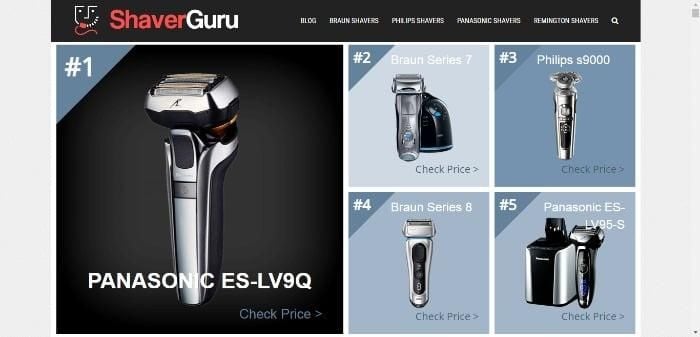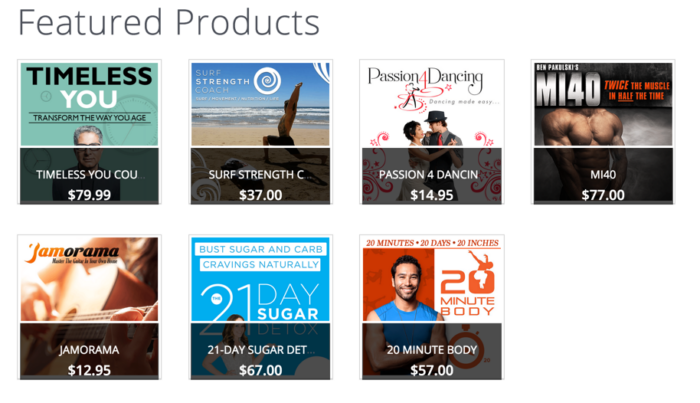If you’ve ever wondered how to earn passive income, then affiliate marketing might just be the answer you’ve been looking for! With affiliate marketing, you can promote other people’s products and earn a commission for every sale made through your efforts. This can be done through various methods such as blogging, email lists, or even video marketing. The key is to find an affiliate program or network that interests you and sign up for it. This article will explore the different components of affiliate marketing, such as the merchant, the affiliate marketers, the consumer, and the affiliate network. We’ll also touch on popular affiliate networks, like Amazon Associates, and discuss how to become an affiliate merchant yourself. So, grab a cup of coffee, sit back, and let’s dive into the world of passive income through affiliate marketing!
Finding the Right Affiliate Program
affiliate marketing is a great way to earn passive income by promoting other people’s products and earning a commission for each sale. To get started, you need to find the right affiliate program that aligns with your interests and goals. Here are some steps to help you research and choose the perfect affiliate program for you.
Researching Affiliate Programs
When researching affiliate programs, it’s important to consider the product or service being offered. Look for programs that align with your interests and expertise, as this will make it easier for you to promote and endorse the products. Take the time to read reviews and testimonials from other affiliates to get an idea of the program’s reputation and track record.
Additionally, research the commission structure of the affiliate programs you’re considering. Look for programs that offer competitive commission rates and regular payouts. Some programs may also offer additional incentives, such as bonuses or performance-based rewards.
Choosing a Niche
Choosing a niche is a crucial step in affiliate marketing. A niche is a specific segment of the market that you will focus your promotions on. By selecting a niche, you can target a specific audience and establish yourself as an authority in that area. Consider your interests, passions, and areas of expertise when choosing your niche. It’s important to choose a niche that you are genuinely interested in and knowledgeable about, as this will make it easier to create valuable content for your audience.
Considering Commission Rates
One of the main factors to consider when choosing an affiliate program is the commission rate. The commission rate is the percentage of the sale that you will earn as a commission. Different affiliate programs offer different commission rates, so it’s important to compare and choose one that offers competitive rates. However, it’s also important to consider the product’s price and the demand for it. Sometimes, a higher commission rate may be offered for a product with a lower price point or lower demand. It’s crucial to strike a balance between commission rates and product quality.
Evaluating Product Quality
When promoting affiliate products, it’s important to choose products that are of high quality and align with your values and brand. Remember, you are endorsing these products to your audience, so you want to ensure that they are reliable, effective, and provide value to your audience. Take the time to research the products, read customer reviews, and test them out if possible. By promoting quality products, you will build trust and credibility with your audience, which will ultimately lead to more sales and a stronger affiliate marketing business.
Building a Strong Online Platform
Once you have chosen the right affiliate program, it’s time to start building a strong online platform to promote your affiliate products. Your online platform will act as a hub for your audience to discover and engage with your content. Here are some key strategies to help you build a strong online platform.
Creating a Blog
Blogging is a powerful tool for affiliate marketers. It allows you to create valuable content, establish authority in your niche, and drive traffic to your affiliate offers. When creating a blog, choose a domain name and hosting provider that align with your brand. Select a visually appealing theme and design, and make sure your blog is mobile-friendly. Start by creating informative and helpful blog posts that provide value to your audience. Incorporate relevant affiliate links within your content, and always disclose your affiliate relationships to maintain trust with your readers.

This image is property of neilpatel.com.
Setting Up Microsites
In addition to a blog, you may want to consider setting up microsites. Microsites are smaller, specialized websites that focus on a specific product or niche. They can be a great way to target a specific audience and promote affiliate products effectively. When setting up a microsite, choose a domain name that reflects your niche or product. Create engaging and informative content that showcases the benefits and features of the product you are promoting. Experiment with different design elements to optimize conversions and track the performance of your microsites using analytics tools.
Growing an Email List
Email marketing is a powerful tool for affiliate marketers. By building an email list, you can stay connected with your audience and promote affiliate products directly to their inbox. To grow an email list, offer valuable incentives such as free e-books, exclusive content, or discounts in exchange for email addresses. Use opt-in forms strategically on your website and blog to capture email addresses. Once you have an email list, create valuable and engaging newsletters that provide useful information and recommend relevant affiliate products. Always make sure to comply with email marketing regulations and provide an easy way for subscribers to unsubscribe if they wish to do so.
Harnessing the Power of Video Marketing
Video marketing is another effective strategy for affiliate marketers. Creating videos allows you to engage with your audience on a more personal level and showcase the benefits of the products you are promoting. Start by creating informative and engaging product reviews, tutorials, or demonstrations. Use visuals, storytelling, and your own personal experiences to connect with your viewers. Embed affiliate links within your video descriptions or use overlay ads to drive traffic to your affiliate offers. Remember to optimize your videos for search engines and promote them on social media platforms to reach a wider audience.
Creating Valuable Content
Creating valuable content is essential for successful affiliate marketing. Your content should be informative, engaging, and relevant to your audience. By providing value to your audience, you will build trust and credibility, which will ultimately lead to more conversions and sales. Here are some strategies to help you create valuable content.
Choosing the Right Keywords
Keywords play a crucial role in driving targeted traffic to your content. Research and choose keywords that are relevant to your niche and have a high search volume. Tools such as Google Keyword Planner or SEMrush can help you identify popular keywords and their search volume. Integrate these keywords naturally into your content, including blog posts, video titles, descriptions, and email newsletters. By optimizing your content for keywords, you will improve your search engine rankings and attract more potential customers.
Writing Informative Blog Posts
Blog posts are a great way to provide valuable information and engage with your audience. Start by understanding the pain points and needs of your target audience. Use this knowledge to create informative and helpful blog posts that address these needs. Include actionable tips, step-by-step guides, and relevant examples to make your content more valuable. Incorporate affiliate links within your blog posts when it makes sense and is relevant to the topic. Always disclose your affiliate relationships to maintain transparency with your readers.

This image is property of neilpatel.com.
Producing Engaging Videos
Videos are a highly engaging medium that allows you to connect with your audience on a deeper level. When producing videos, focus on delivering valuable information and entertaining content. Use visuals, storytelling, and demonstrations to engage your viewers and keep them interested. Incorporate affiliate links within your video descriptions or use overlay ads to drive traffic to your affiliate offers. Remember to optimize your videos for search engines by including relevant keywords in your titles, descriptions, and tags.
Providing Valuable Email Newsletters
Email newsletters are a direct way to communicate with your audience and promote affiliate products. When creating newsletters, provide valuable information, tips, or insights that your subscribers will find useful. Incorporate affiliate product recommendations that align with the content of your newsletters. Personalize your emails and address your subscribers by their names to create a more personalized and engaging experience. Experiment with different email formats and subject lines to optimize open rates and click-through rates.
Promoting Affiliate Products Effectively
Promoting affiliate products effectively is essential to maximize your affiliate marketing revenue. You want to strategically place affiliate links, utilize product reviews and comparisons, implement call-to-actions, and make the most of social media promotion. Here are some strategies to help you promote affiliate products effectively.
Strategically Placing Affiliate Links
When promoting affiliate products, it’s important to strategically place your affiliate links to maximize conversions. Place your links within relevant and engaging content, such as blog posts or video descriptions. Consider using in-text links, call-to-action buttons, or banners to make your affiliate links more noticeable. Make sure the placement of your affiliate links is natural and does not disrupt the flow of your content. Always disclose your affiliate relationships to maintain transparency with your audience.
Using Product Reviews and Comparisons
Product reviews and comparisons are powerful tools for promoting affiliate products. When creating reviews or comparisons, focus on providing accurate and unbiased information. Include the pros and cons of the product, its features, and benefits. Use personal experiences and examples to make your reviews more relatable. Compare similar products to help your audience make an informed decision. Incorporate affiliate links within your reviews and comparisons to drive traffic to the products you are promoting.
Implementing Call-to-Actions
Call-to-actions (CTAs) are effective in motivating your audience to take action and make a purchase. When implementing CTAs, use persuasive language and create a sense of urgency. Clearly state the benefits or incentives of clicking on the CTA, such as discounts, limited-time offers, or bonuses. Place your CTAs strategically within your content, such as at the end of a blog post or within a video description. Experiment with different CTA designs and placements to optimize conversions.

This image is property of neilpatel.com.
Utilizing Social Media Promotion
Social media platforms offer a vast audience for promoting affiliate products. Create engaging and visually appealing posts to capture the attention of your followers. Incorporate affiliate links within your social media posts, but make sure to follow each platform’s guidelines and regulations. Use relevant hashtags to reach a wider audience and encourage sharing and engagement. Interact with your followers by responding to comments and messages. Experiment with different social media platforms to find the ones that resonate best with your target audience.
Maximizing Affiliate Marketing Revenue
Maximizing your affiliate marketing revenue requires a strategic approach. By driving targeted traffic, optimizing conversion rates, implementing cross-selling and up-selling techniques, and exploring affiliate networks, you can increase your earnings and grow your affiliate marketing business.
Driving Targeted Traffic
Targeted traffic is crucial for increasing your conversions and sales. Aim to attract visitors who are interested in your niche and have a higher likelihood of making a purchase. Implement keyword research and search engine optimization (SEO) techniques to improve your website’s visibility in search engine results. Utilize social media promotion and influencer marketing to reach a wider audience. Consider investing in paid advertising, such as Google Ads or Facebook Ads, to drive targeted traffic to your affiliate offers.
Optimizing Conversion Rates
Conversion rates determine the success of your affiliate marketing efforts. To optimize your conversion rates, focus on creating a seamless user experience and removing any barriers to purchase. Optimize your website’s loading speed to reduce bounce rates. Ensure that your website is mobile-friendly and responsive. Use compelling and persuasive content to encourage your audience to take action. A/B test different landing pages, call-to-actions, and design elements to identify the best-performing combinations.
Implementing Cross-Selling and Up-Selling
Cross-selling and up-selling are effective techniques for increasing your average transaction value. Cross-selling involves recommending complementary products to your customers. For example, if you are promoting a camera, you could also recommend camera accessories. Up-selling involves encouraging customers to purchase a higher-priced product with additional features or benefits. For example, if a customer is considering a basic model of a smartphone, you could recommend the premium model with more storage and advanced features. Implement these techniques within your content and product recommendations to increase your revenue per sale.
Exploring Affiliate Networks
Affiliate networks can provide additional opportunities to maximize your affiliate marketing revenue. Joining affiliate networks allows you to access a wide range of products and merchants. It also provides a centralized platform for tracking your performance, managing affiliate links, and receiving payments. Research different affiliate networks and choose ones that align with your niche and goals. Take the time to understand their commission structures, payment methods, and tracking systems. By diversifying your affiliate marketing efforts through multiple networks, you can increase your revenue potential.
Understanding Affiliate Marketing Metrics
Understanding and analyzing affiliate marketing metrics is crucial for optimizing your performance and maximizing your revenue. By tracking clicks and conversions, monitoring return on investment (ROI), analyzing conversion funnels, and measuring average order value (AOV), you can gain insights into the effectiveness of your affiliate marketing strategies.

This image is property of neilpatel.com.
Tracking Clicks and Conversions
Tracking clicks and conversions allows you to understand how your audience interacts with your affiliate links and content. Use tracking tools, such as Google Analytics or affiliate network tracking systems, to monitor the number of clicks on your affiliate links and the number of conversions made. Analyze this data to identify the sources of your highest converting traffic and the types of content that resonate best with your audience. Use this information to optimize your content and promotional strategies.
Monitoring Return on Investment (ROI)
Monitoring your return on investment (ROI) helps you understand the profitability of your affiliate marketing efforts. Calculate the revenue generated from your affiliate sales and compare it to the costs associated with promoting the products. This can include expenses such as advertising costs, website hosting fees, and any tools or resources you utilize. By analyzing your ROI, you can identify which products or promotional methods are the most profitable and make informed decisions about your marketing strategies.
Analyzing Conversion Funnel
Analyzing your conversion funnel allows you to understand the journey your audience takes from discovering your content to making a purchase. Identify the different stages of your conversion funnel, such as website visits, clicks on affiliate links, adding products to cart, and completing a purchase. Use tools such as Google Analytics or conversion tracking software to track the progression of your audience through each stage. Analyze this data to identify any bottlenecks or areas for improvement within your conversion funnel. Make adjustments to your content, user experience, or call-to-actions to optimize conversions.
Measuring Average Order Value (AOV)
Measuring your average order value (AOV) helps you understand the average amount of revenue generated from each sale. Calculate your total revenue and divide it by the number of orders made. By monitoring your AOV, you can identify opportunities to increase your revenue per sale. For example, you could recommend higher-priced products or offer incentives for customers to add more items to their cart. Experiment with different promotional techniques to increase your AOV and maximize your affiliate marketing revenue.
Building Relationships with Affiliate Networks
Building relationships with affiliate networks is crucial for long-term success and growth in affiliate marketing. By identifying reliable affiliate networks, establishing open communication, negotiating commission rates, and staying updated with industry trends, you can strengthen your partnerships and maximize your earning potential.
Identifying Reliable Affiliate Networks
When choosing affiliate networks to partner with, it’s important to identify reliable networks with a good reputation. Research affiliate networks and read reviews from other affiliates to assess their credibility and trustworthiness. Look for networks that have a wide range of reputable merchants and products. Consider the network’s track record in terms of timely payments, transparent reporting, and customer support. Choose networks that align with your niche and have a strong presence in your target market.

This image is property of neilpatel.com.
Establishing Open Communication
Establishing open communication with affiliate networks is essential for a successful partnership. Actively engage with your account managers and network representatives. Ask questions, seek guidance, and share your ideas and concerns. Regularly communicate your performance data, challenges, and goals. This open dialogue will help foster a healthy and collaborative relationship with your affiliate networks. They can provide valuable insights, promotional opportunities, and support to help you maximize your earnings.
Negotiating Commission Rates
Negotiating commission rates with affiliate networks can potentially increase your earning potential. Once you have established a track record and demonstrated your value as an affiliate, consider approaching your network partners to discuss commission rate increases. Back your request with data and evidence of your performance, such as high conversion rates or significant referral traffic. Be prepared for a negotiation and consider what you are willing to compromise on. Remember, it’s important to maintain a fair balance between commission rates and product quality.
Staying Updated with Industry Trends
Staying updated with industry trends is vital to remain competitive in the affiliate marketing industry. Monitor industry news, blogs, and forums to stay informed about changes in consumer behavior, new product launches, or emerging marketing strategies. Attend webinars or conferences related to affiliate marketing to learn from industry experts and network with other affiliates and merchants. By staying updated, you can adapt your strategies, identify new opportunities, and leverage trends to maximize your affiliate marketing revenue.
Earning Passive Income with Amazon Associates
Amazon Associates is a popular affiliate network that allows affiliates to promote any item sold on Amazon and earn a commission. With its extensive product range and trusted brand, Amazon Associates provides a lucrative opportunity to earn passive income. Here are some strategies to help you make the most of the Amazon Associates program.
Understanding the Amazon Associates Program
Before getting started with Amazon Associates, it’s important to understand the program and its guidelines. Familiarize yourself with the commission rates, payment methods, and policies of the program. Ensure that you comply with Amazon’s terms and conditions to maintain your affiliate status. Take advantage of Amazon’s educational resources, such as their Associate Central platform and support channels, to learn more about the program and stay updated with any changes or updates.
Leveraging Amazon’s Extensive Product Range
One of the advantages of the Amazon Associates program is the extensive product range available for promotion. Leverage this by identifying products that align with your niche and target audience. Focus on products that have high demand, positive customer reviews, and competitive prices. Write informative and engaging product reviews or create comparison guides to help your audience make informed purchasing decisions. Use Amazon’s built-in product search and recommendation tools to find products that are popular and trending in your niche.
Optimizing Product Promotion on Your Platform
When promoting Amazon products, it’s important to optimize your product promotion strategies to maximize your conversions. Incorporate high-quality product images, detailed descriptions, and customer reviews within your content. Use Amazon’s native ad units, such as banners or product carousels, to showcase products more prominently. Incorporate affiliate links strategically within your content and call-to-actions to encourage your audience to click and make a purchase. Experiment with different promotional techniques, such as limited-time offers or discounts, to drive urgency and increase conversions.
Utilizing Amazon Tools and Resources
Amazon provides a range of tools and resources to help affiliates maximize their earnings. Take advantage of these tools to optimize your promotional efforts. Amazon’s Product Advertising API allows you to access real-time product data and generate affiliate links programmatically. Use their SiteStripe toolbar to easily create affiliate links, share products on social media, or add products to your blog posts. Utilize Amazon’s analytics and reporting tools to track your performance, analyze your conversions, and optimize your strategies.
Becoming an Affiliate Merchant
Becoming an affiliate merchant allows you to create and sell your own products and recruit affiliate partners to promote them. This can be a lucrative opportunity to expand your revenue streams and grow your affiliate marketing business. Here are some steps to help you become an affiliate merchant.
Generating Product Ideas
Start by generating product ideas that align with your niche and target audience. Consider the pain points and needs of your audience and think about how your product can solve those problems. Conduct market research, identify gaps in the market, and validate your ideas by asking people if they would buy your product. Use feedback and insights from your target audience to refine and develop your product concept.
Validating Product Marketability
Before investing time and resources into creating a product, it’s important to validate its marketability. Conduct market research to assess the demand for your product and identify potential competitors. Use survey tools or social media polls to gather feedback from your target audience and gauge their interest. Consider pre-selling or offering pre-orders to test the market demand before fully developing the product. This validation process will help ensure that there is a viable market for your product.
Creating and Launching the Product
Once you have validated the marketability of your product, it’s time to create and launch it. Develop a detailed plan and timeline for product development, production, and distribution. Consider factors such as sourcing materials, manufacturing, packaging, and shipping logistics. Create high-quality, visually appealing product assets and descriptions to attract customers. Set up a user-friendly and secure e-commerce platform to sell your products. Take the time to test your product thoroughly and gather feedback before the official launch.
Finding and Recruiting Affiliate Program Partners
To effectively promote your product, you’ll need to find and recruit affiliate partners to join your program. Start by identifying affiliates who operate within your niche and have an engaged audience. Reach out to potential affiliates and introduce your product and affiliate program. Provide them with compelling reasons to join your program, such as competitive commission rates, exclusive promotional materials, or performance-based rewards. Develop a strong relationship with your affiliates by providing ongoing support, frequent communication, and incentives to maximize their promotion efforts.
Using Affiliate Marketing Tools
Affiliate marketing tools can streamline your operations, track your performance, and provide valuable insights to help you optimize your affiliate marketing strategies. Here are some helpful affiliate marketing tools to consider.
Gumroad for Affiliate Program Setup
Gumroad is a platform that allows you to set up and manage your own affiliate program. With Gumroad, you can create custom affiliate links, track affiliate sales and commissions, and provide promotional materials to your affiliates. The platform also offers built-in analytics and reporting to help you analyze your affiliate program’s performance. Gumroad’s intuitive interface and user-friendly features make it a popular choice for affiliate program setup.
Digital Product Delivery for Seamless Transactions
If you’re selling digital products as an affiliate merchant, a digital product delivery tool is essential. These tools securely deliver your digital products to customers after purchase, ensuring a seamless and automated transaction process. Digital Product Delivery platforms such as SendOwl or E-junkie allow you to host and distribute your digital products, automatically generate license keys, and integrate with popular payment gateways. These tools handle all the technical aspects of product delivery, allowing you to focus on marketing and growing your affiliate business.
Everflow for Campaign Tracking
Everflow is an affiliate marketing tracking platform that provides advanced tracking and reporting capabilities. It allows you to monitor clicks, conversions, and other key metrics to track the performance of your affiliate campaigns. Everflow offers real-time data, granular reporting, and fraud detection features to ensure accurate and reliable tracking. The platform also provides integrations with popular ad networks and affiliate networks, making it a comprehensive solution for tracking your affiliate marketing campaigns.
Other Helpful Affiliate Marketing Tools
There are several other helpful affiliate marketing tools that can enhance your affiliate marketing efforts. Keyword research tools like SEMrush or Ahrefs can help you identify high-demand keywords and optimize your content for search engine rankings. Social media management tools such as Hootsuite or Buffer can help you schedule and automate your social media posts to reach a wider audience. Landing page builders like ClickFunnels or Unbounce can help you create high-converting landing pages for your affiliate offers. Consider researching and experimenting with different tools to find the ones that best suit your needs and budget.
In conclusion, affiliate marketing offers a rewarding opportunity to earn passive income by promoting other people’s products and earning a commission. By finding the right affiliate program, building a strong online platform, creating valuable content, and effectively promoting affiliate products, you can maximize your affiliate marketing revenue. Understanding affiliate marketing metrics, building relationships with affiliate networks, and utilizing helpful tools will further enhance your success in the affiliate marketing industry. Whether you choose to partner with Amazon Associates or become an affiliate merchant yourself, the key to success is to provide value to your audience and continually adapt your strategies to stay ahead in this dynamic industry.




